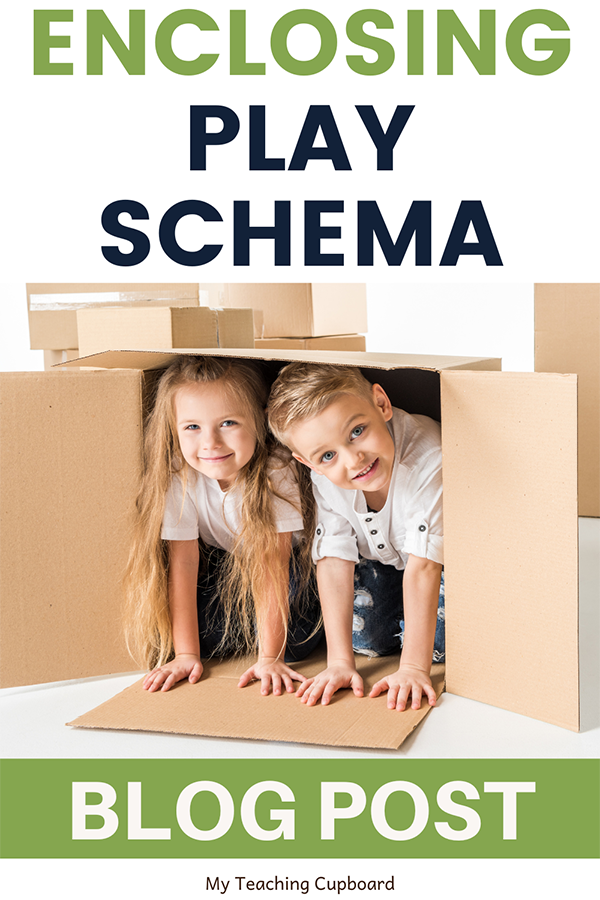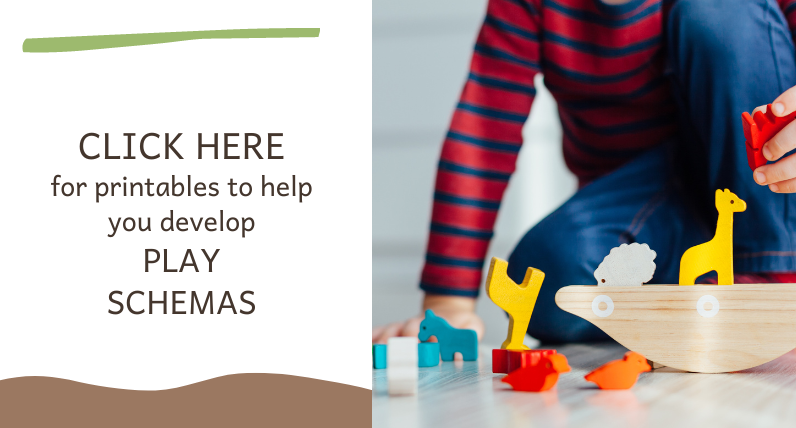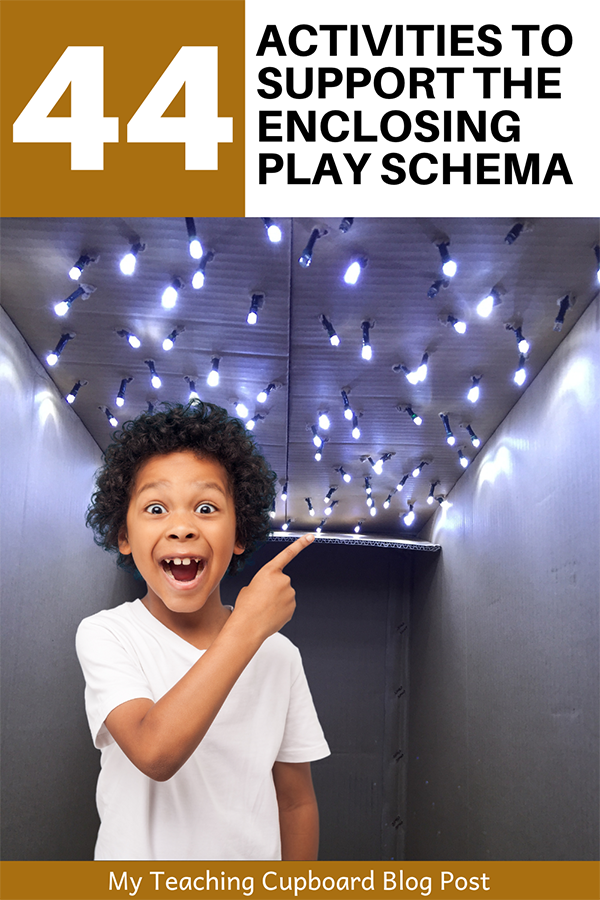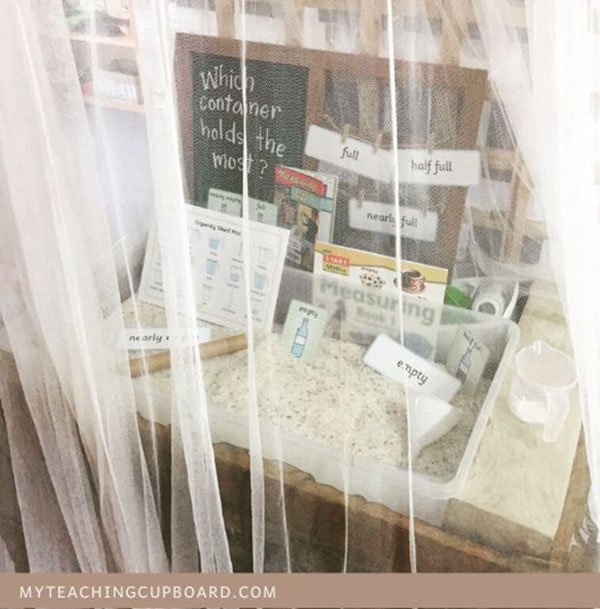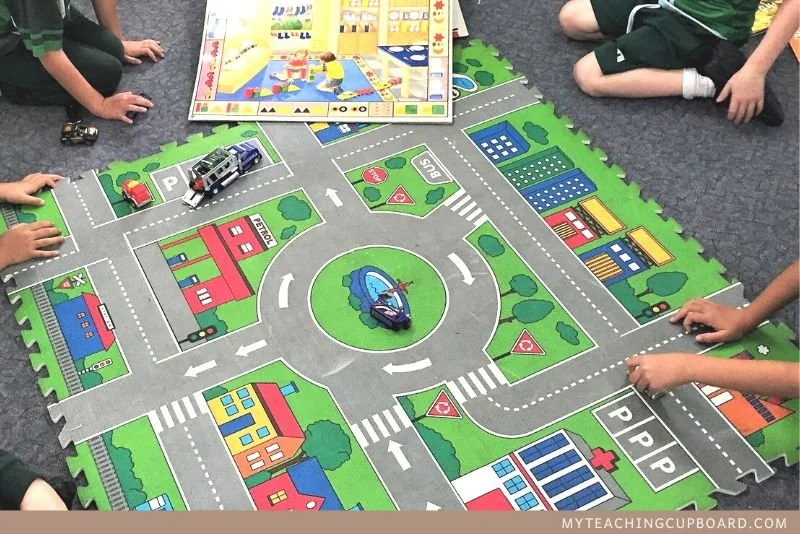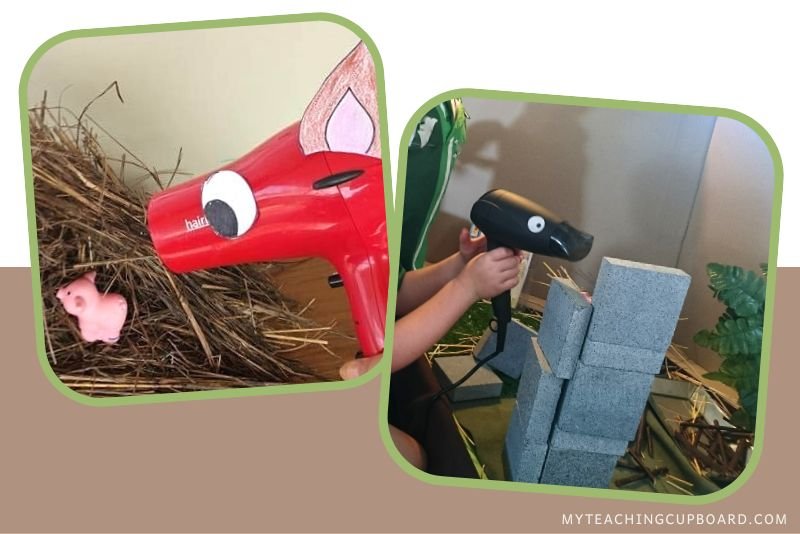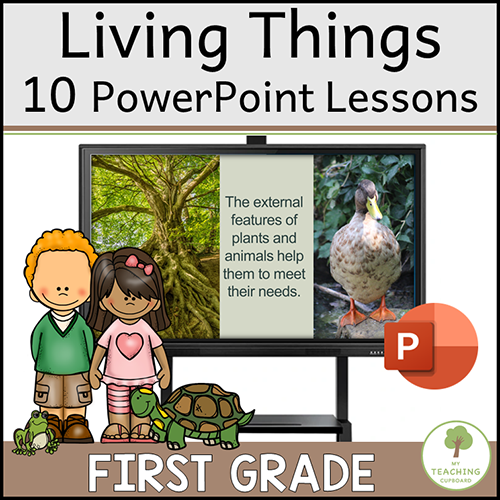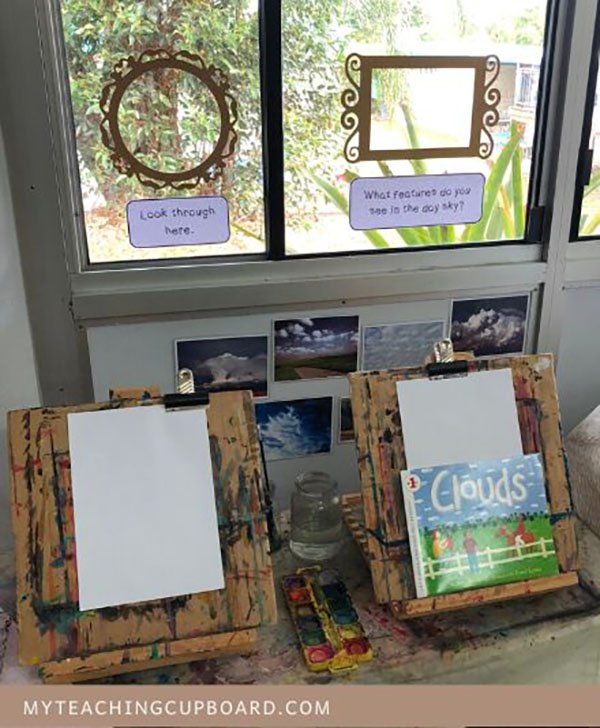The Enclosing Schema
The Enclosing schema is common in preschool and kindergarten classrooms. If you have children fascinated with enclosing objects or themselves, you have children developing their enclosing play schema.
This schema can easily be nurtured and supported through play-based learning. Read on if you want to learn more about this play schema and discover some practical tips and ideas for supporting it in your classroom.
Have you heard of the enclosing play schema? It’s very common in preschool and kindergarten classrooms. If you have any children creating boundaries like fences or enclosing spaces, there’s a good chance you have children demonstrating enclosing play.
By understanding and supporting the enclosing play schema, you will be able to build important cognitive skills like spatial awareness and problem-solving in your students.
All early childhood teachers know how important play is for children's development and learning so in this blog post we will explore this amazing play schema and then give you some useful play-based learning tips and ideas for encouraging and supporting enclosing play in your classroom.
What Is a Play Schema?
Play schemas are the repeated patterns of behaviour that you notice your children doing when they play. There are nine schemas most commonly observed in young children. The enclosing play schema is just one of these nine.
I’ve got a blog post guide to play schemas that you should check out if you want to learn more about these nine play schemas. It explains in detail what play schemas are and how you can harness the power of play schemas in your classroom.
Schematic play relates to how children play and explore their learning resources and environment. It isn’t a specific type of play like dramatic play or sensory play. When you understand play schemas, you will see them happening in all areas of your classroom.
For example, you might notice a child using blocks to build fences around the animals in a small world play area and then drawing lines around their pictures in the art area. This child is demonstrating schematic play through enclosing.
You might think these observations describe different forms of play in very different scenarios, but overall, the schema in these play scenarios remains the same.
Once you’ve observed a child displaying a specific type of play schema, you will probably notice the child repeating that same action schematically using various objects or even their own bodies over and over in all areas of your classroom.
Why Are Play Schemas Important for a Play-Based Classroom?
Enclosing play is an important part of a child's development and should be supported in the early childhood classroom. The enclosing schema helps children develop their spatial awareness and problem-solving skills. It can also promote a sense of control and security for the child.
Understanding play schemas and being able to identify the ones your students are developing is critical to the success of your play-based learning pedagogy.
When you know about all the play schemas, you will
Better understand your students and their developmental needs.
Broaden your understanding of how children learn.
Tap into your student’s interests and create a child-led curriculum.
Increase student engagement.
Know how to encourage your students to become more curious.
Deepen the learning and the intensity of their investigative play sessions.
Make the right observations to inform your planning.
Be able to easily differentiate the learning experiences you offer your students.
Not every child in your classroom will enjoy all of the learning provocations you set up. Have you ever gone to the trouble of setting up an amazing learning invitation only to have it completely ignored by your students? Yeah - ME TOO! It’s frustrating and disappointing.
Understanding play schemas will put an end to this and guide you to tailor investigation areas your children can’t wait to explore.
You will be able to engage your students on a much deeper level and easily extend their thinking when you use play schemas to help you.
You’ll find yourself documenting the learning that is happening in your classroom in a much different way when you understand play schemas. You’ll be able to make the right classroom observations – ones that will help you differentiate and adapt the curriculum to suit the needs of your students.
Planning purposeful learning experiences is so much easier when your observations and knowledge of play schemas guide you. Schema play can give you extremely valuable insights into your student’s passions, interests, and developmental needs. These insights can inform your planning and teaching. Neglected learning centers will be a thing of the past!
Understanding play schemas can also help you understand what can sometimes be seen as an undesirable classroom behaviour. For example, you might have a child constantly disrupting the dramatic play area because they are always moving the furniture around. You can imagine how frustrating that would be for you and all the children trying to play in the space.
A behaviour like this might be seen as undesirable. However, when you understand that this type of behaviour comes from a child exploring their enclosing play schema, you can set up a learning invitation to support them and turn the undesirable behaviour into a desirable one.
When teachers understand why certain behaviours are happening in their classrooms, they quickly discover children do not simply misbehave. There’s always a reason for desirable and undesirable behaviours and play schemas are often that reason.
If you are interested in following the child or a child-led pedagogy, you know how important teacher observations are. Understanding play schemas will help you to make better observations. You will notice children demonstrating many different play schemas when you observe your students, and you’ll learn so much more about their interests and their developmental needs.
If you want the observation checklist I use in my classroom, you can download it for FREE HERE in my Free Resources Library.
You can use your knowledge of play schemas to inform your curriculum planning too. With play schemas in mind, your classroom observations and documentation will provide you with the information you need to set up purposeful and thoughtful learning invitations.
Recognising and understanding play schemas is vital to the success of your play-based classroom.
What is an Enclosing Schema?
The enclosing schema is a natural pattern of behavior in young children. You might observe it when you see your students enclosing objects or themselves in spaces.
In a play based classroom, this play schema is often observed in block play and in the dramatic play area. If you have any students developing their enclosure schema, they are the ones always creating boundaries and borders to contain or enclose objects or themselves.
You will notice your students with this play schema building enclosures like fences and walls with the blocks and other small world play objects. They love to wrap up dolls and toys in the dramatic play space. Sometimes you might even notice them enclosing their own bodies by wrapping themselves up in fabrics or hiding in small spaces.
Children with the enclosing play schema love defined spaces and exploring math concepts relating to size, shape, and pattern. During investigation time, you might see them putting fences up around their toys or placing borders around their drawings.
A child with the enclosing schema will sometimes build enclosures around themselves by making a fence or boundary around their play area too.
Sometimes they might enclose items in boxes or other containers. Through this schema, children demonstrate their interest in ordering and organising things and spaces.
The enclosing schema can be observed when children build walls for forts or barricades.
This schema is a common way children explore their environment and develop a sense of control and security. It is important for early childhood educators to understand this play schema and provide opportunities for children to engage in it through play-based learning.
The enclosing schema is very similar to the enveloping play schema. They are so similar; these play schemas are often confused. It becomes easier to differentiate between the two when you know
the enveloping schema is about covering the whole object so that it is completely out of sight.
the enclosing schema is more about surrounding or enclosing an object. The object being enclosed can still be seen.
It is interesting to note that children can become interested in more than one schema at any one time. Most researchers in the field of play schemas believe that for most children, schema play occurs in multiples.
What Are Children Using the Enclosing Schema Learning?
The enclosing schema is believed to be an extension of the trajectory schema because children are extending their understanding of lines to create their enclosures. It is often observed after children have explored vertical and horizontal lines through the trajectory play schema.
Children exploring the enclosing schema will often begin to join lines or build structures with a variety of different materials before they start to experiment with filling and joining their enclosures. The enclosure schema relates to children learning to order, combine, place, and bridge things to form enclosed spaces.
Children interested in this play schema will be developing their own body awareness and a sense of self too.
Schematic play helps young children to represent their thoughts, feelings, and ideas symbolically.
By supporting the enclosing play schema in your kindergarten or grade one classroom, you will be helping your students to develop important skills like spatial awareness, problem-solving, and even self-regulation.
The enclosing play schema can help your students with their emotional regulation. As children create boundaries and enclosures, they start to feel a sense of control over their environment, leading to a sense of security and comfort. This is really important for children who may be feeling overwhelmed or anxious in your classroom.
Giving your students the opportunity to create enclosed spaces where they can process their emotions and calm down will help them to express their emotions in a safe and contained way. For example, a child who is feeling angry or frustrated may find comfort in creating an enclosed space that feels safe and secure.
As well as emotional learning skills, your students will also be learning curriculum math concepts related to shapes, space and measurement. As they do this they will be:
Developing fine and gross motor skills.
Exploring lines and angles.
Learning about cause and effect.
Developing visual tracking skills.
Fine-tuning their spatial awareness.
Using their senses to make scientific observations.
Developing creative and critical thinking skills.
Building science and math skills like predicting, estimating, problem-solving and measuring.
What Vocabulary Supports the Enclosing Schema?
Positional language (eg: next to, behind, in front of, above, below)
Tall, long, short, wide, length, height, width, equal, unequal
Straight, curved, intersecting,
Enclose, wrap, contain, surround, confine
Safe, secure, contained
Inside, outside, entrance, exit
Bridge, tunnel, fence, gate, wall, structure
Boundary, edge, margin, border
Corner, side, angle
44 Activities to Support the Enclosing Schema in a Play Based Classroom
In a play-based classroom, you can provide your kindergarten and grade one students with a wide variety of hands-on activities and resources that will support their interest in the enclosing schema.
When setting up your classroom to support this play schema, you just need to think about what materials would support your children to create boundaries and enclosures and how the activities you plan can be linked to your curriculum.
Remember, children exploring this schema will be fascinated with creating spaces that are enclosed, and for some children, spaces that are cozy and secure. Providing plenty of opportunities for this type of play is essential.
So here are 44 hands-on learning experiences that you can offer your students to encourage and support this schema in your classroom:
1.Create cozy investigation areas with curtains, netting, fabric, or lattice to enclose an investigation area for children to work in.
2. In the dramatic play space, supply baskets, boxes, and open containers that children can use to enclose items like pretend food or clothing and dress-up accessories.
3. Provide children with cardboard boxes, blankets, and pillows so they can build their own forts and cubbies. Add blankets, tarps, netting, pegs, strings, crates, and boxes to outdoor play areas so children can make their own forts and cubbies outside too.
4. Offer wooden building blocks, Lego, or other construction materials that children can use to create small world walls, towers, and other enclosed structures.
5. Set up a sensory table with bases like sand, water, or rice. Add measuring containers that children can use to contain and manipulate the sensory base material.
6. Add rulers and set squares to drawing or painting invitations to encourage your students to create drawn boundaries and enclosures.
7. Provide materials like yarn, ribbon, or pipe cleaners that children can use to wrap and twist around objects.
8. Offer playdough or clay with loose parts like toy animals or people so children can use the playdough to create enclosed spaces for the manipulatives.
9. Use large cardboard boxes to create cubbies and enclosed learning areas. They could reflect a classroom learning topicby creating an underwater cave from a large cardboard box when you are learning about the sea or by poking fairy lights in the roof when you are learning about space and the stars.
11. Providing large cardboard boxes can lead to all sorts of learning opportunities. Many of your students will like to climb inside and hide in the boxes. Add cushions and some reading books for the perfect little reading cubby. If your box has a lid - all the better! Add a torch and your children will happily read in there for ages. Hiding in boxes is one of the most common enclosing schema behaviors.
12. At block play, offer a variety of boxes, containers, and lids that children can contain loose parts in and also use to create enclosures and structures.
13. Create a "secret garden" area with plants and natural fencing materials for children to explore and hide in. This is a great idea if you are looking to create a “special place” for the HASS Geography unit.
14, Provide Hammocks. Hammocks provide the feeling of being enclosed that these children seek. If you don’t have trees to suspend your hammocks from, you can secure them between posts or fences. You can buy hammocks quite cheaply, or create your own using bed sheets and rope.
15. Children with the enclosing play schema love exploring enclosed shapes so they really like colouring in. I like to add colouring-in pictures to a light table. These mindful colouring sheets would be perfect for children with an enclosing play schema.
There are 25 Positive Affirmations to colour in this set. They will help your children develop positive thinking and a growth mindset through fun mindful colouring-in. Designed with younger children in mind, the positive growth mindset quotes and cute illustrations featured in these colouring pages will appeal to children in preschool, kindergarten and the early primary school grades.
SAVE MONEY AND GRAB THE BIG GROWTH MINDSET BUNDLE HERE
16. Another activity for a large cardboard box is colouring-in and mark making. Glue some of these colouring-in sheets to the inside of the box. Add some felt pens and crayons along with some clipboards and blank paper to encourage writing and drawing.
17. To extend children’s exploration of lines, position and location through their interest of the enclosing play schema, set up a learning invitation related to maps. This relates to both Maths and HASS Geography learning intentions.
18. Make hats and crowns in the makerspace. Supply strips of cardboard and add measuring tapes to encourage measuring.
19. Children with the enclosure schema will love to draw around shadows of objects. Place some paper outside on the concrete and add some objects related to your learning intentions. 3D objects for maths or toy animals for the Living Things Science unit are just some examples. If you want your students to work inside, use a light projector for your light source.
20. Nests are of interest to children with this play schema. Invite children to make nests at the playdough area or with collage materials.
21. Another colouring-in activity these students will enjoy are colour by number worksheets.
22. Add toy animals or vehicles to a sand tray. Ensure the sand is wet so the children can create tunnels and caves for their toys. This activity could also be offered at the playdough table and works well with clay too.
23. Offer cardboard that can be cut up into strips or wood craft sticks and other collage materials for children to make their own picture frames for their artwork in the art area.
24. Provide boxes in dramatic play for children to make beds and cages.
25. Tracing around objects is another activity children with the enclosing play schema will enjoy. We always offer 3D shapes at this learning invitation.
26. Tracing their bodies is always popular for the enclosing play schema. This can be done with chalk out on the concrete. If you are lucky enough to have large sheets of paper or cardboard, your students can add external features with paint or collage materials to their traced body shapes. Either way, make sure to offer measuring tapes to this engaging learning invitation.
27. Explore using hoops to enclose sorted objects like loose parts, 3D shapes and toy animals.
28. Children with this play schema want to investigate how their bodies can be wrapped and enclosed. Invite them to make capes and cloaks or hats and masks in your classroom makerspace. Add these items to your dress-up clothes in the dramatic play area too.
29. If you are learning about fairytales or story retelling, set up a small world area for The Three Little Pigs story. The children will love making houses to enclose the little pigs. We do this activity as part of the Materials Science Unit.
30. Explore the children’s classic My Cat Likes to Hide in Boxes book. This story and all the related thematic activities will fascinate children interested in enclosing.
31. Offer tape and lengths of ribbon or rope to enclose and fence off spaces. Provide a measuring tape and give the children challenges to only use certain lengths of the ribbon.
32. Draw enclosed shapes on concrete with chalk to create hopscotch games.
33. When you are learning about habitats and living things, invite your students to create shoe-box habitats. If you are studying this unit, you will want to grab my 10 Living Things PowerPoint lessons. These engaging lessons cover all the ACARA content descriptors from the Year One Biological Sciences strand. They will teach your students to make links between the external features of living things and the environments in which they live. Your students will also investigate how the needs of living things are met in a variety of habitats, and they will compare the differences between healthy and unhealthy habitats too.
WANT THE ENTIRE TERM’S LESSONS DONE FOR YOU?
Check out these educational presentations 👇
34. Lego, Duplo, wooden blocks, and any other similar construction sets are going to be of high interest to children with an enclosing play schema. Your students will use these materials to build a variety of enclosures, so make sure to also offer your kids something to enclose. Toy animals, people, or vehicles are the standard go-to resources, but any loose parts will work well.
35. Empty picture frames and loose parts are all you need for an engaging learning provocation that supports the enclosing play schema.
36. When we are studying the weather and observing the day sky, I like to blutac some frames onto our windows. The children with the enclosure schema are fascinated with all the ways these frames enclose the outside landscape.
37. Children exploring the enclosing play schema like exploring and making faces. They experiment with the placement of facial features within the enclosed face shape. We set this learning invitation up at the start of every school year when we are learning about ourselves and our emotions.
You can grab the printables to make these freaky face parts HERE.
38. Creating moats around sandcastles in the sandpit is a wonderful enclosing activity. Add buckets of water and some shovels. So many critical thinking and social skills are developed in this simple learning invitation.
39. Adding some sticks and playdough to any investigation area will have your students exploring various ways to enclose objects. You’ll be surprised at how many different ways your students will use these simple resources.
40. Include a basket of small wooden blocks in your small world setups so your students can use them to create enclosures like walls, fences, houses, and car parking spaces.
41. Supply some blackboards, chalk, and a few toy vehicles for children to draw roads, parking lots, and enclosures for the vehicles. You can develop and consolidate number concepts by getting the children to count and label the spaces.
42. Did you know that learning about lines and using them to draw enclosures leads to letter formation? If your students are ready to take their exploration of lines to the next level, add opportunities to practice letter formation to your literacy learning area. Letter formation posters and tracing worksheets are ideal resources for this provocation.
43. Children interested in the enclosing play schema will like any type of flexible furniture that cradles or encloses their bodies. If you have the budget and the space to add these options to your learning area, your students will find them not only fascinating but also calming.
44. A budget-conscious version of these types of flexible furniture options is the readily available laundry basket. Cushions are optional. Just add a reading book and your students can sit inside the cozy basket to read. I have a few of them stacked next to our classroom reading area.
Laundry baskets make wonderful loose parts both for indoor and outdoor imaginative play.
Conclusion
Enclosing play is an important schema to support in early childhood education. Providing the right materials and activities can help encourage this type of play. Like all schema play, the development of the enclosing schema happens naturally so why not harness your student’s natural curiosity and channel it into purposeful play experiences?
By incorporating some of the above activities and materials into your classroom, you can create a rich and engaging learning environment that supports the enclosing play schema and also helps your students build essential developmental skills.
If you enjoyed this blog post on The Enclosing Schema and found some useful ideas here, please consider sharing it.
Just CLICK the sharing box below.👇

